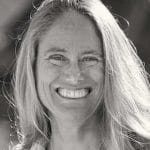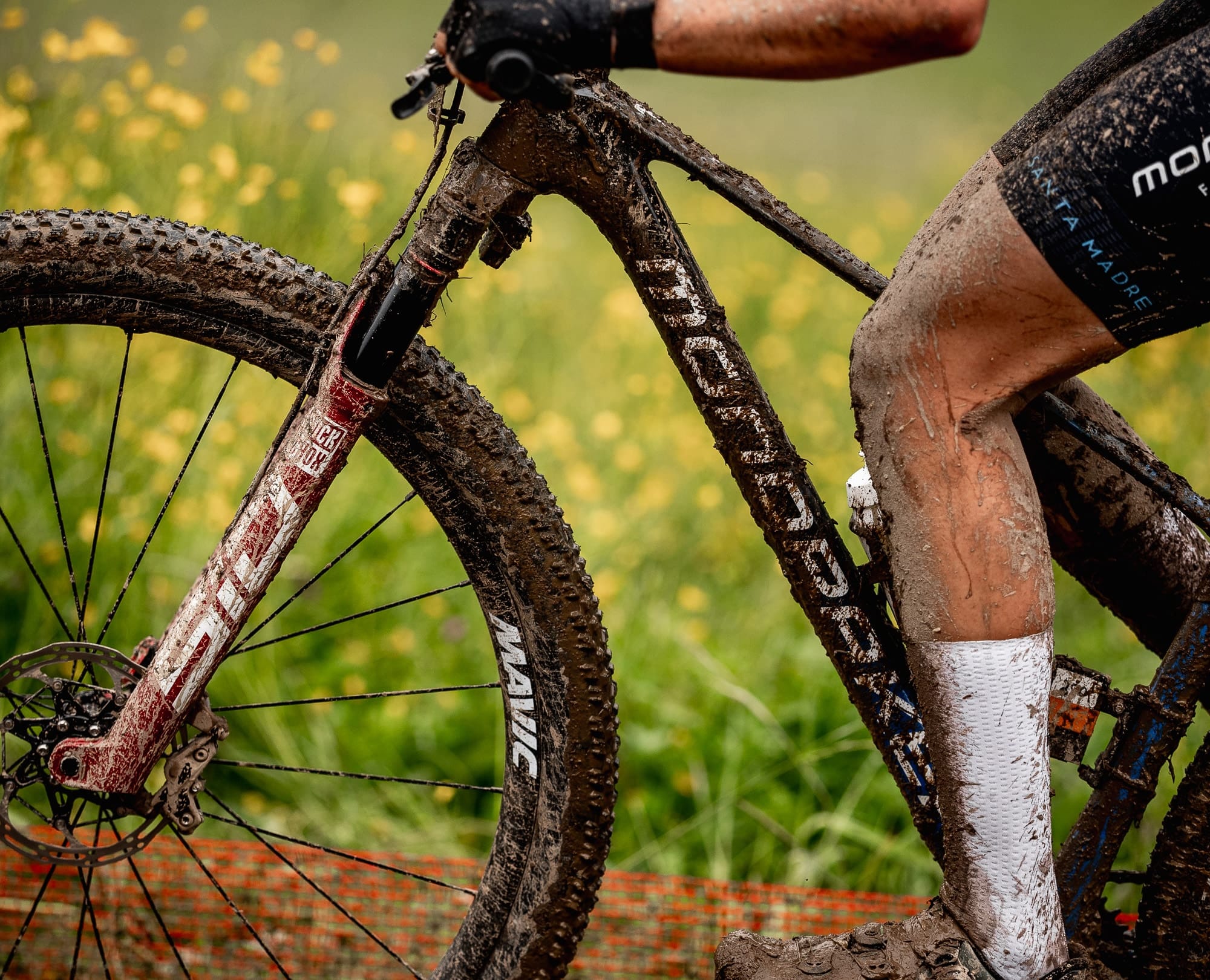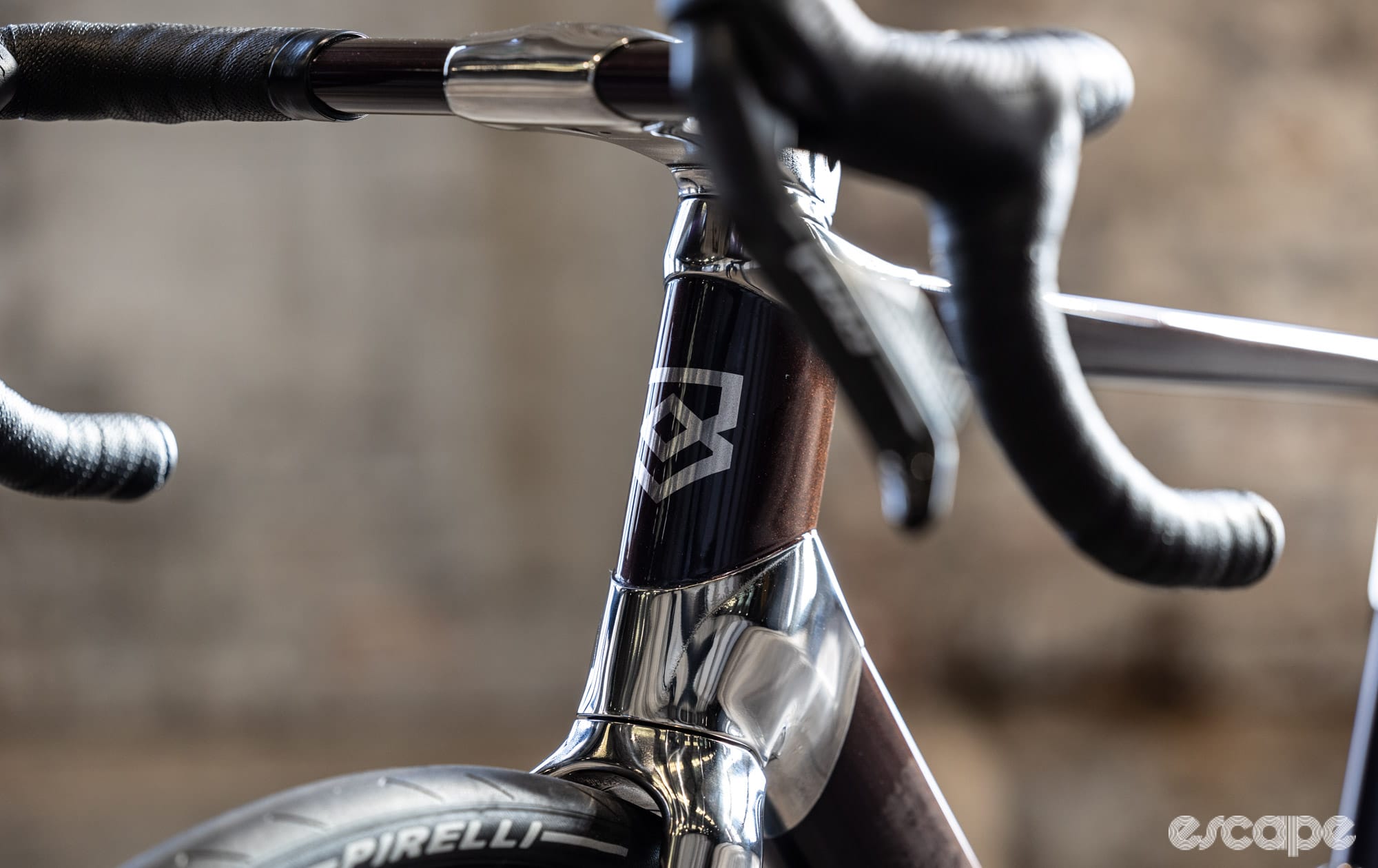On a Tuesday morning last July, Matteo Jorgenson went to the start at the Tour de France with one goal. The day’s stage from Morzine les Portes du Soleil to Megève looked promising for a breakaway finish, and riding his first Tour, Jorgenson wanted to be there when it happened. With an uphill finish that looked likely to suit him, the stage offered a chance to fulfill a dream. But first, he had to find the right move. Inside 100 kilometers to go, a small group attacked on the Col de Jambaz. It was absorbed quickly and a counter-attack followed. Jorgenson jumped on it.
Up ahead on the roadside, Cheri Jorgenson waited to cheer for her son. Delayed by a climate protest, Cheri was well short of the final climb where she’d hoped to watch the race. Still, she saw Jorgenson racing in the front group at the Tour de France and yelled his name as he passed by her. Then she huddled in the shade of a nearby grocery store patio to watch the finish. Squinting at the flickering images on her iPad, Cheri saw Jorgenson ride under the flamme rouge in a select group of three.
Though a chase group swarmed them from behind, Jorgenson held on to cross the line fourth in Megève. And that wasn’t all. By the end of the 2022 Tour de France, Jorgenson had finished in the top five on three separate stages. It was a promising Tour debut for the 23-year-old. Since his first season with Movistar in 2020, Jorgenson has shown a knack for finding his way to the front of bike races. In the process, the lanky American has accumulated some eye-catching results, including eighth overall at Paris-Nice and ninth at the Tour of Flanders.
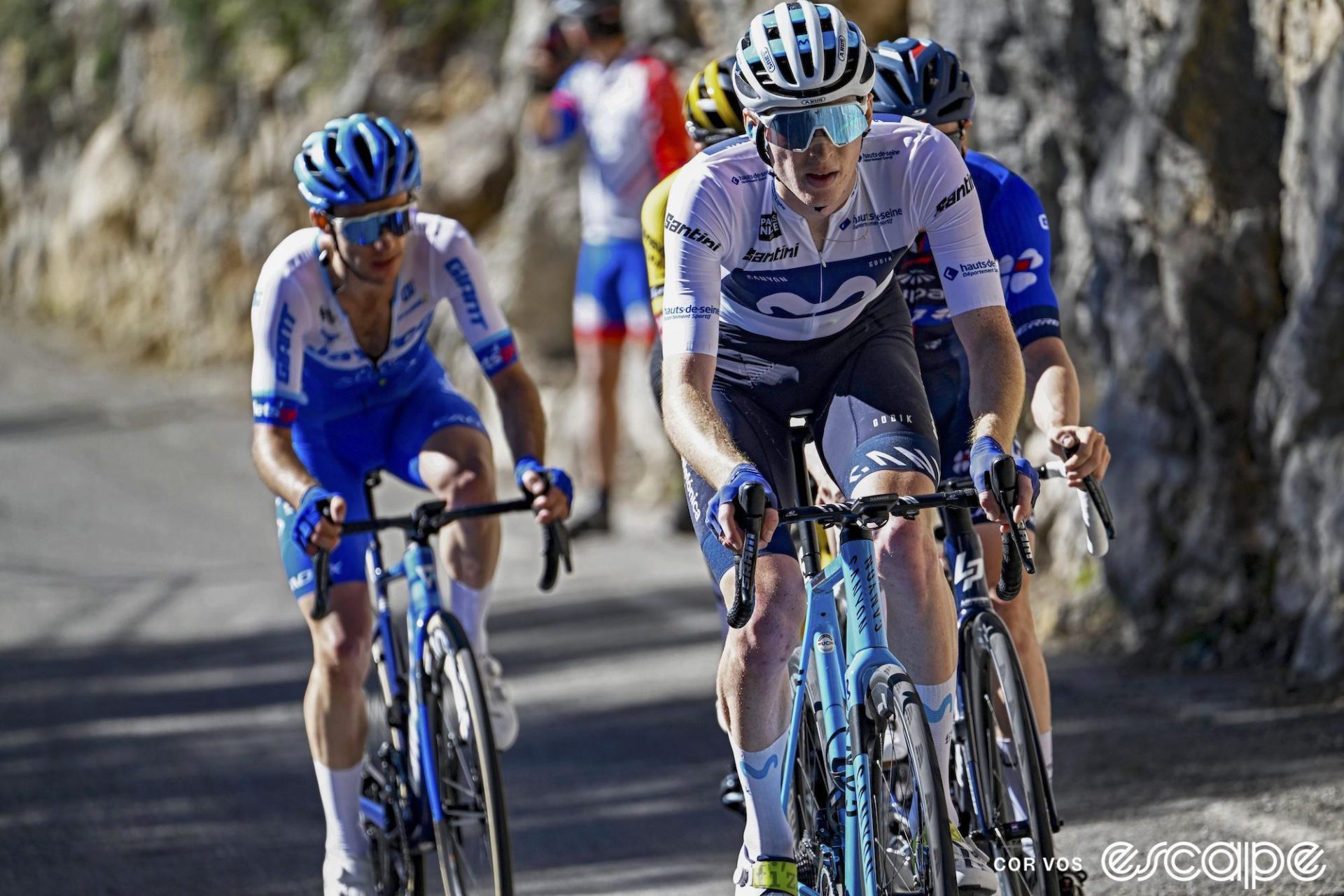
That’s all the more impressive, because Jorgenson never expected to make it this far. As a junior, he never scored a big result and professional cycling felt way beyond his reach. And yet, he never stopped chasing it. Every time Jorgenson encountered an obstacle, he found a way to overcome it. It’s taken years of patient work, but his grinding path has brought with it a unique resilience and a quiet confidence. He’s learned that he can do this bike racing thing – and it just might turn out that he can do it even better than he ever imagined.
The kid in the too-big bibshorts
When Cheri remembers Jorgenson’s earliest days on the bike, she pictures a tiny kid in over-sized bibshorts. Even the smallest youth-sized kits were too big for him. “It took years for the elastic of the legs on the XXS youth kit to actually touch his legs,” she recalls. For legwarmers, Jorgenson borrowed his father Sam’s armwarmers. Following his older brother Kristo, Jorgenson started riding at around age six. After riding mountain bikes, Jorgenson branched out to road and cyclocross.
The two brothers rode for the Byrds, a club in Boise, Idaho. Run by Douglas Tobin, the Byrds is a bit of a unicorn in the US, where youth cycling teams don’t exist on every corner. “They allowed me to ride with kids my age and it provided that group environment that just kept me into it,” Jorgenson says. The biggest goal of the year at the Byrds was always the junior national championship races. “I remember really liking racing and the process and lead-up to the races,” Jorgenson says. As he traveled to events, Jorgenson met people who were different from his neighbors back in Boise. “I got to experience a lot of the U.S. that I think I would have missed if I hadn’t been a cyclist.”
The freedom and independence of riding also captivated him. “I was drawn to the sense of adventure you get every day as a kid when you have a bike,” he says. “You don’t have to rely on your parents to take you somewhere. It opens up the world to you.” His parents encouraged him to try other sports such as basketball and soccer, but they didn’t interest him. Both brothers raced downhill skiing for a few years, and after ski practice, Jorgenson would routinely ride his rollers. The bike already had a hold on him.
If the bike captured his imagination from an early age, Jorgenson also showed his determination from the start. Growing up, his extended family traveled to Europe to tour by bike. Initially, Cheri pulled young Jorgenson in a trailer. When he reached the age of five, he insisted on pedaling and they attached a tagalong to Sam’s bike. Even when Jorgenson fell asleep in the saddle, he’d refuse to get in the follow car. “His head would be bobbing, and I’d tell him, ‘Matteo you can go in the van now,’” Cheri recalls. “But no! Hell would have to freeze over for him to get off that bike.”
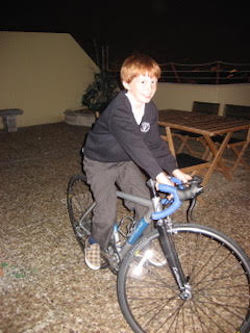
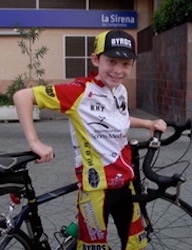
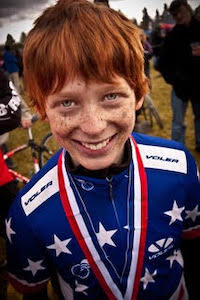
Small for his age, Jorgenson often didn’t have the extra kick at the finish he needed to win, but he showed a talent for racing bikes. By age 14, he’d won three junior national titles. The first came in 2010, when he won the 10-12 age group in cyclocross. A time trial title in the 10-12 category followed in 2013, and the following year, he was the 13-14 cross-country national champion. In subsequent years, he placed well at nationals, but wins proved elusive. “Matteo was really skinny, and I think he was two or three years behind in development,” recalls Sam. If Matteo was frustrated, he doesn’t remember it. “I just wanted to keep riding bikes,” he says.
Six years separate the Jorgenson brothers, and Matteo was often the youngest rider in the group. “He was always struggling to keep up,” says Sam. “He’d crash and be bloody and get up and keep going.” Sam remembers young Jorgenson looking up to his brother. When Kristo went to Europe with the US national team, Jorgenson wanted to go, too. “His brother was just that much older and that much more ahead of him — and he looked at that, and thought it was the coolest thing ever,” says Sam. Chasing after his older brother made Jorgenson persistent.
Observant and thoughtful, young Jorgenson liked to make his own decisions and do things his own way. Cheri recalls clashing with her son repeatedly. “Matteo and I butt heads consistently, because he is really strong-willed,” she says. Racing bikes, Jorgenson found a passion and a perfect match for his personality. “You look at these other people at the level he’s riding at right now that were superstars when they were juniors,” says Sam. “He was never a superstar.” Jorgenson simply refused to give up.
Growing pains
In a Starbucks parking lot at the 2015 US National Championship in Truckee, California, 16-year-old Jorgenson took the next step in his fledgling career. There he met Toby Stanton, who invited him to join the Hot Tubes Racing team. It was a big step forward for the still-skinny kid from Boise. “I always lacked the belief that I could be a pro,” says Jorgenson. “But I think probably unconsciously I did believe at some point that I would become professional, because I did start trying to make it.” At that point he loved racing, but he didn’t necessarily expect it to lead anywhere. With Stanton’s help, Jorgenson began to change that.
An East Coast legend, Stanton started Hot Tubes Racing in 1992. Since then, the team has become a magnet for the country’s best juniors. Riders such as Ian Boswell, Gage Hecht, and Magnus Sheffield have passed through his program. “He’s like the long-time head coach of a football team that’s won the national title 12 times,” says former road and cyclocross pro Tim Johnson, another East Coast legend. “There should be a trophy named after him that’s given to the rider who shows both athletic talent and maturity.” Stanton can pick and choose. It’s never just about being fast.

“I think some of the riders he’s most proud of didn’t even have successful cycling careers,” says Boswell, who rode for Hot Tubes in 2009 before a seven-year WorldTour career. “Toby sees it as a mission to create responsible adults – whether it’s in professional cycling or elsewhere – and he uses cycling to teach those life lessons.”
Riding for Stanton means doing it his way. Riders learn to contribute to the team, both on and off the bike. Boswell recalls doing team chores, such as cooking dinner and cleaning bikes. Sometimes, Jorgenson’s determination and intelligence put him at odds with Stanton. “He’s a smart kid, which as a young athlete is not always a good thing,” says Stanton. “He had an idea of how he thought things should go – and sometimes he had a different view from what the team prescribed.” Mostly, though, Jorgenson recognized the value of Stanton’s experience. "Toby taught me a lot of the ways of being professional and being part of a real team.”
Two weeks after the Starbucks meeting, Jorgenson traveled to the 2015 Junior Tour of Ireland with Hot Tubes. “Matteo was very naturally gifted at time trialling and climbing, but he tended to fall down a lot,” recalls Stanton. “So the idea was, bring him to Europe, give him some experience.” The stage race proved eye-opening for the young American, who had never raced on small roads or had to move through such a tight pack. “It’s a big shock at first,” says Jorgenson. “It’s a really chaotic environment and you’re a kid and you’re afraid.”
When he began racing in Europe, Jorgenson remembers trying desperately to get in breakaways or sometimes going straight out the back. “I think I did what all Americans do at first,” he says, laughing. “You just try to get out of the peloton.” But Jorgenson also confirmed the talent that Toby saw in him. On that first trip, he won a stage in Ireland. A finish line image shows a tall, gangly rider celebrating solo at the top of a climb. His bibshorts finally fit, but his jersey hung loose. Jorgenson still had growing to do.
The following year, Hot Tubes held a training camp in Georgia. The team’s daily rides took them over some of the same roads where the Tour de Georgia had raced between 2003 and 2008. “On all these big climbs, there are times for all of these Tour de France guys,” says Stanton. “And Jorgenson was setting new KOM records.” The challenge for Stanton wasn’t developing Jorgenson’s physical talent. “Matteo’s flaw as a young junior was pressure,” recalls Stanton. “So, it was about trying to figure out how to get him out of his head.”
A breakthrough came for Jorgenson at the 2017 junior national championship held on an intense circuit in Louisville, Kentucky. The big pre-race favorite was Brandon McNulty, who had yet to win a road national title. After an early breakaway went up the road, McNulty hit out to cross the gap. Riding for Hot Tubes, Gage Hecht went with him. “I was like, alright, there’s five guys in the move, and I’ve got two in it," Stanton recalls. To Stanton's surprise, Jorgenson put his head down and powered across, too. Driving the break, Jorgenson set up Hecht perfectly for the win.
“That was the first time Matteo got out of his own way,” says Stanton. “He went as hard as I’d ever seen him go, because he wasn’t thinking about himself. And when he stopped thinking about the reasons he couldn't do it, he let himself do it."
Looking back, Jorgenson can see a similar pattern. “There were times when I probably had the ability to win, but I never had the confidence,” he says. “I think there were times when I held myself back.” At Hot Tubes, Jorgenson learned how to race and contribute to the team. Though his talent was increasingly evident, Jorgenson didn’t have a big, attention-grabbing result. After all, one of his best days on the bike with Hot Tubes had come in support of his teammate Hecht. The path forward was by no means clear.
The persistent American
In fact, when the time came to find an U23 team, Jorgenson got shut out. That year there weren’t many spots available at teams like Hagens Berman Axeon, which might have been an obvious next step. Jorgenson was undeterred. “I had to look for other ways to make it in cycling, if I wanted to continue,” he says. In fall 2017 Jorgenson enrolled in Quest College in British Columbia. He signed with Jelly Belly, a Continental team, and traveled with the US national team to Europe. Now 18, Jorgenson stood with one foot in cycling and one foot out. He understood that if he wanted to make it, he had to move to Europe.
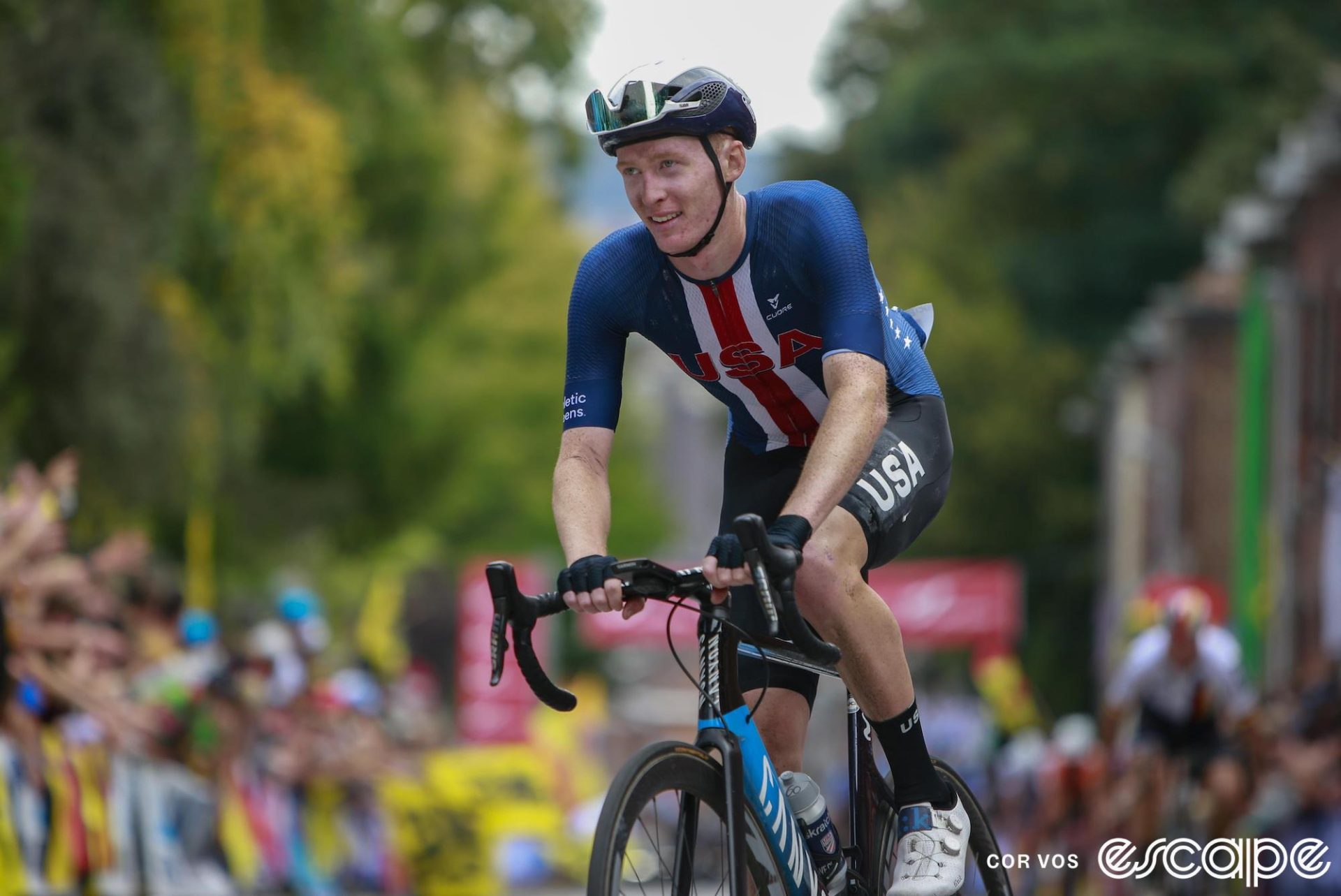
Starting in 2017, Jorgenson had sent email after email pitching himself to U23 teams in Europe. While racing with the national team, he approached team directors and introduced himself. “I didn’t see any other way to do it,” he says. Over and over, he received the same answer. No one had space for an unknown rider from the US. “For most teams, it’s such a risk,” he says now. “You give them your race resumé and it’s races they’ve never heard of, against guys they’ve never heard of.” Americans had often struggled on European teams, and that worked against him, too.
Then at the four-stage Rhône-Alpes Isère Tour in early May 2018, Jorgenson finished ninth in the general classification, just 27 seconds behind the winner. AG2R-La Mondiale’s development team, then called Chambéry Cyclisme Formation, is based in the area, so they knew the difficult, hill-strewn race well. Ahead of one of the stages, Jorgenson met the team’s director. “They have a huge history with the race and value it,” he says. “So for me to do any kind of result there showed them, OK, this kid at least has something.” His willingness to approach the team’s director showed his motivation. “They were the one team that said yes.”

Having created an opportunity, Jorgenson prepared meticulously to make the most of it. That winter Jorgenson contacted riders who had tried to race at the team and failed. “They all told him, ‘If you don’t speak French, you’re out,’” recalls Sam. Even more than his fitness, learning French became Jorgenson’s priority and he spent the winter hunkered down with Duolingo. Cheri recalls encouraging Jorgenson to learn French for years without success. Now it felt important to him, so he did it. Though his parents had misgivings about his decision to leave college, they supported Jorgenson financially during his time at Chambéry. “I told myself I would go for a year,” he says. “If I didn’t really progress, I would stop.”
For the first several weeks after he arrived in France in early 2019, he couldn’t speak to anyone. “He just sat at the dinner table, saying nothing, but absorbing everything,” says Cheri. ”That was kind of his nature growing up, too. He was more reserved and whatever he observed and learned, he used to his advantage.” Learning French unlocked the door for Jorgenson. “I think they were impressed with how fast I learned it,” he says. “They started giving me more opportunities.” After that, everything came quickly.
In August, 20-year-old Jorgenson went to the Tour de l’Avenir, a benchmark race for U23 riders. With two stages to go, he sat second overall. The day before the final stage, he cracked and lost 15 minutes. Though his lost his high placing in the overall classification, his stage results against top young riders such as Tom Pidcock attracted attention. He also won the points classification. In Stanton’s view, Jorgenson crossed a bridge. “I was like, ‘Forget that stage,’” he recalls. “‘You are now a contender.’” At last, Jorgenson saw that being a professional cyclist might be possible. “The history of the race told me that if I could perform there I could probably be a good professional,” he says.
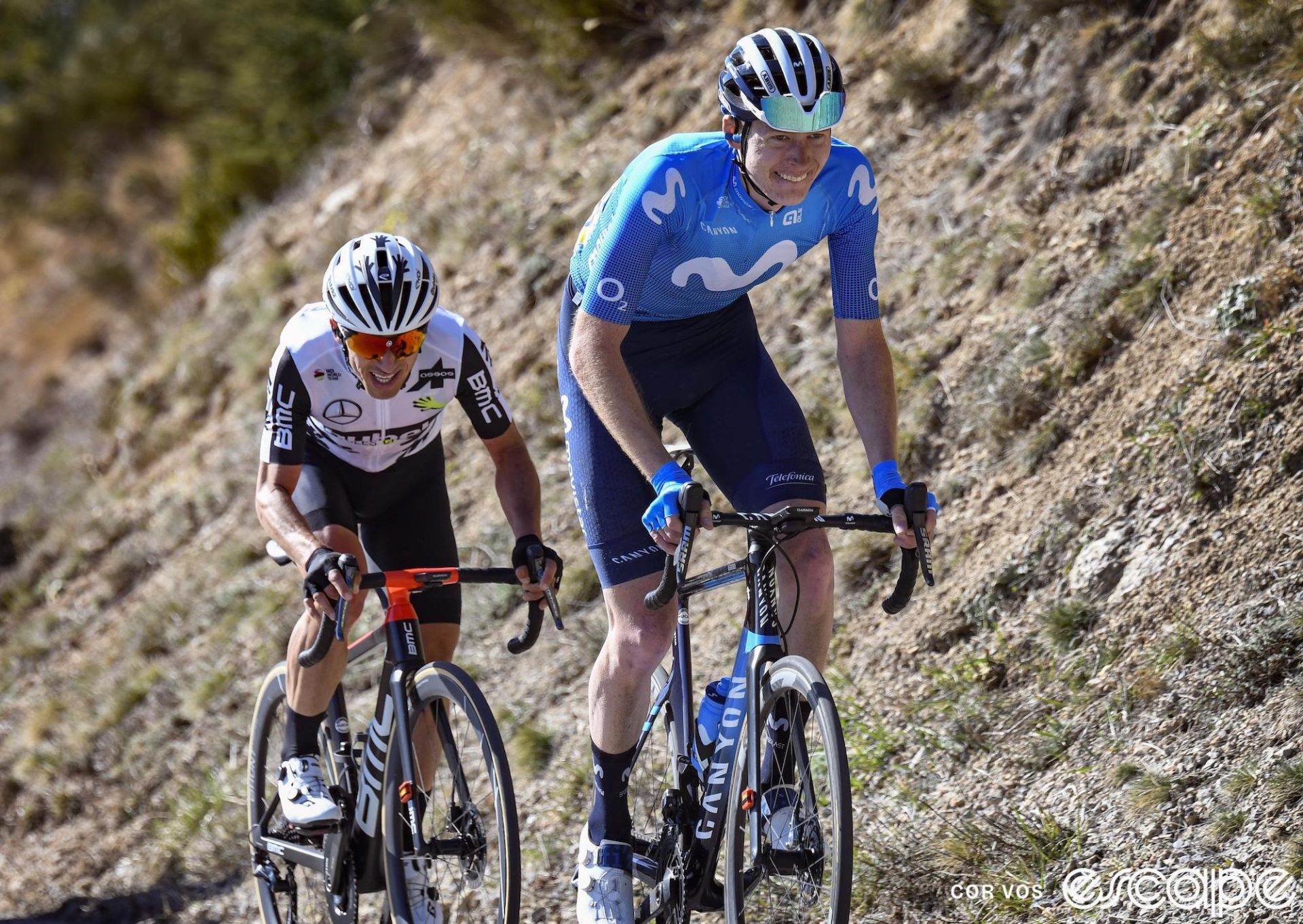
The directors at Movistar agreed. By the end of the year, Jorgenson had secured a contract with the WorldTour team for the 2020 season. They say winners make their own luck, and Jorgenson’s path to the pro ranks suggests there’s some truth to it. Not only did he make the most of every opportunity that came to him, Jorgenson very often created those opportunities for himself through thoughtful planning and sheer stubbornness. “The path that he took was the right path for him,” says Stanton. “He did it the old-school way. He did it through hard work, dedication, and paying fucking dues.”
Jump to the WorldTour
When Stanton teaches his young riders tactics, he tells them to find a replay of an old race. At 50 kilometers to go, find the winner, he tells them. Then follow every move that rider makes on the way to the finish. Jorgenson’s career in the WorldTour so far suggests that he’s done his homework. In August 2020 Jorgenson rode Milan-San Remo, his first Monument. With its high speeds and sinuous roads, the race to San Remo tests riders’ tactical sharpness and dexterity. On the Via Roma, Wout van Aert won a two-up sprint ahead of Julian Alaphilippe. Behind them, a pack of roughly 20 riders fought for third. Tucked in the group was 21-year-old Jorgenson. He finished 17th.
“I was watching the race at home on television,” recalls Sam. “People would just keep getting peeled off and I was like, ‘Is he still there? Is he still there?’ He made it all the way to the end, and I thought, ‘Geez, maybe he’s going to be able to do it.’”
When team directors look for riders, of course they want to see big results. But they’re also looking at how a rider races. Good legs are useless without an astute brain attached to them. A rider who can consistently make it to the finish in the front group or get into an early breakaway is often as valuable to a team as someone with a single big result. As a junior and U23, Jorgenson may not have been a star, but he learned how to read a race. At Milan-San Remo, Jorgenson's performance confirmed that he could do it at the WorldTour level and that, increasingly, he had the legs to back it. At the end of that season, Movistar extended his contract through the end of 2023.
He’s thrived there. The team has given him a chance to spread his wings and experiment with different races. Jorgenson’s ability to learn languages has served him well, and he quickly acquired Spanish at Movistar. While some riders view their first professional contract as an end point, Jorgenson’s work ethic saved him from that trap. “Looking back at the first few years of his pro career, it’s obvious that Jorgenson was choosing a career path, not just trying to get a contract,” says Johnson. His slow progression through the ranks has taught Jorgenson to trust the future and keep his eye on the big picture. “It gave me that drive to do a lot of the really hard things, and a lot of the things that a lot of people wouldn’t have wanted to do,” he says.
It helps that Jorgenson has developed an authentic passion for training. “If you don’t have some sort of love for the preparation, it’s a pretty tough road,” he says. Modern bike racing requires very precise, data-driven training, and Jorgenson has come to love this side of the sport. He relishes structured training, where he has specific tasks to complete each day. With his detailed records, he can look both behind him and ahead to see his progress unfolding. He’s intrigued by the patterns he finds as he records each metric over the long-term. “It just provides my brain with something nice to focus on,” he says. “I think cycling can become really monotonous if you don’t have that.”

Over the past two years, Jorgenson has put his drive to do the hard things to the test. At Paris-Nice in 2021, he finished eighth. Then he put his head down and trained as hard as he’s ever trained. He’s said since that he went so deep that he nearly didn’t finish the 2021 Giro d’Italia, his first Grand Tour. He made it to Milan, but his results that year were mostly forgettable. Jorgenson kept working. A promising sign came at the 2022 Tour de France when he finished in the top five in three separate stages. That buoyed him and fed his confidence. Jorgenson invested his salary back into his performance with training camps and other support. And in his patient way, he waited.
A winner in his head
It paid off. In 2023 Jorgenson has had his best season yet. He started by winning the Tour of Oman to secure his first professional victory. “A lot of what I felt was relief to know that it was possible,” he says. “I think in the past when I looked at winning bike races, it just felt really far away and like something that didn’t really feel feasible.” That first win gave Jorgenson new confidence in his decision to pursue cycling and in his training process. “I had this feeling like, ‘If I continue down this path, it’s going to work out.’” A month after his win in Oman, Jorgenson finished eighth overall at Paris-Nice, equaling his 2021 result.
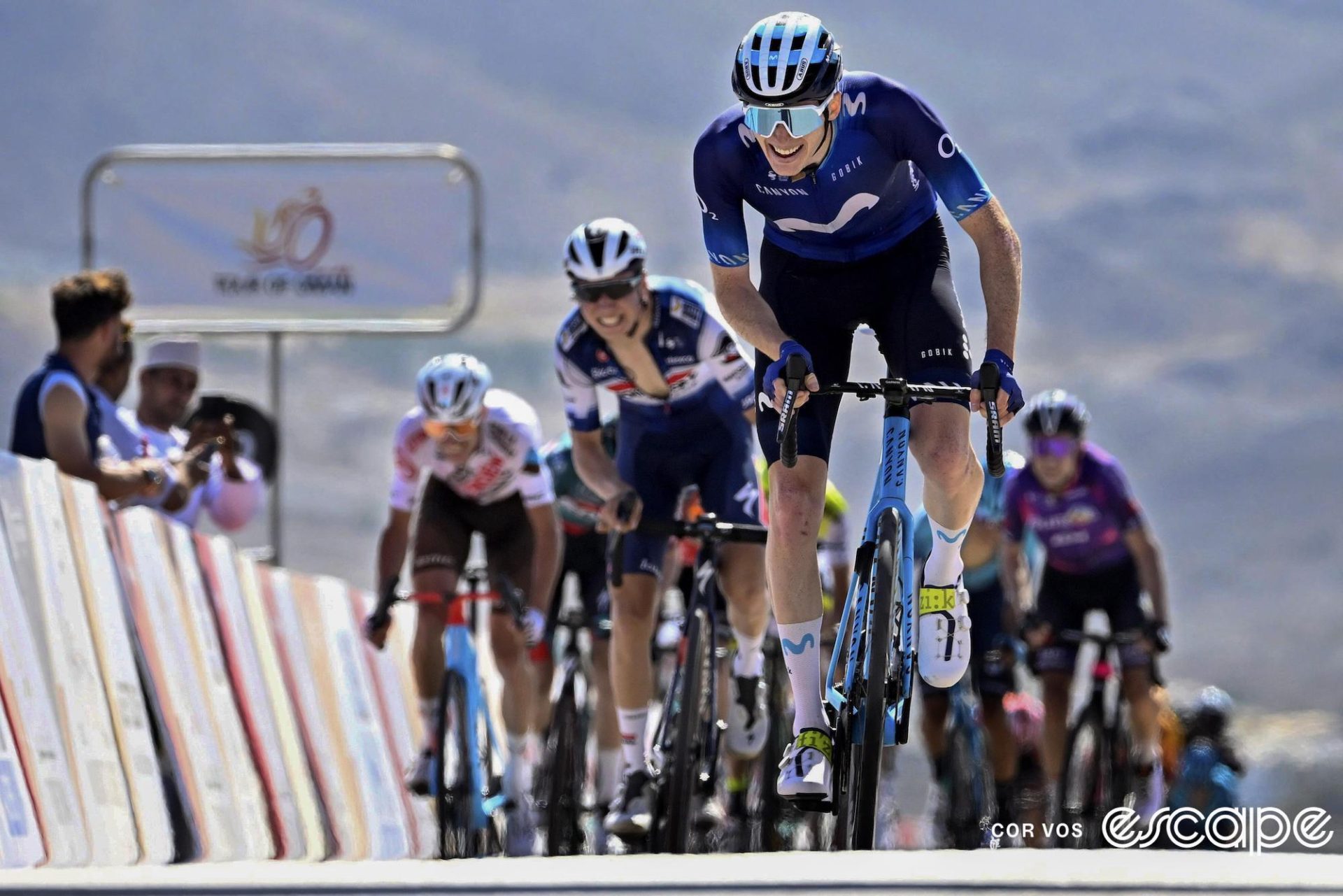
Then Jorgenson traveled to Belgium. His first stop was the E3 Saxo Bank Classic, where he translated his newfound confidence into a willingness to attack on the cobbles. On the Berg ten Stene at 70 km to go, he instigated a move that stayed away for roughly 15 km before Van Aert, Mathieu van der Poel, and Tadej Pogačar came across. Though Jorgenson soon lost the lead group of six, he kept his head, rode steadily, and he found his way into a chase group. Then he attacked again. At the finish, he soloed across the line fourth, 33 seconds behind winner Van Aert.
A week later, Jorgenson lined up for the Tour of Flanders, where he again demonstrated his ability to read the race and a willingness to throw himself into the wind. With more than 90 km to go, Jorgenson attacked from the main field on the Berendries. Across a tantalizing 15-second gap, he fought his way to an elite breakaway of nine that included Mads Pedersen, Stefan Küng, and Neilson Powless. Over the top of the Taienberg, Jorgenson’s long-legged frame and distinctive white-framed 100%’s were never far from the front of the group.
Fifteen kilometers later, Jorgenson was still there when race favorites Pogačar and Van der Poel reached them. On the Oude Kwaremont, Jorgenson had a front-row seat as Pogačar launched his race-winning move with Van der Poel in desperate pursuit. And at three km to go, Jorgenson was racing for third alongside Van Aert, Pederson, and Powless. When the sprint wound up, Jorgenson couldn’t match it, and he finished seven seconds behind the group to take ninth overall. No one finishes in the top 10 at the Ronde by accident.
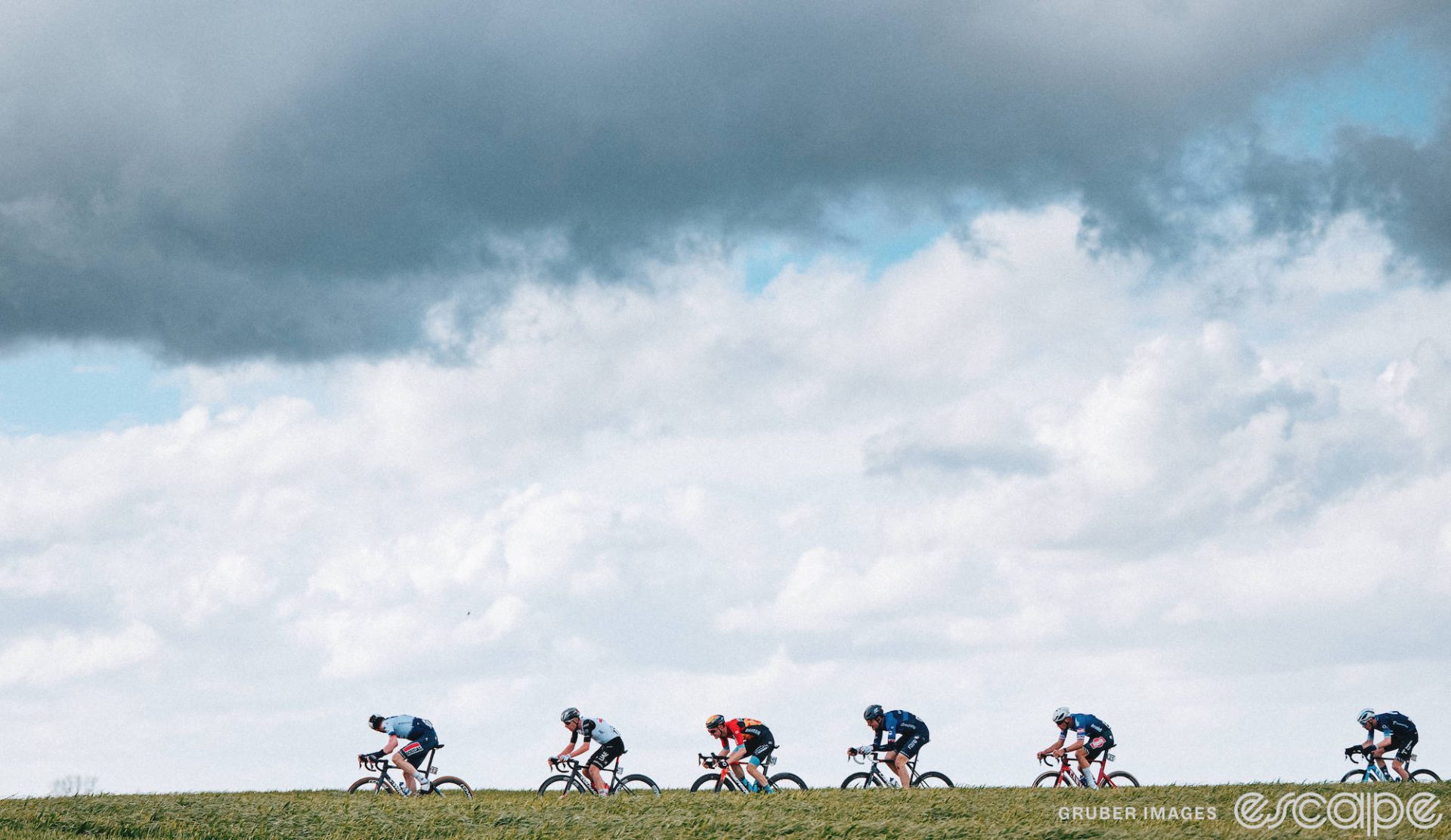
For now, Jorgenson has resisted specializing as a racer. In the past, American riders have often focused on stage racing, sometimes lured by dreams of winning the Tour de France, other times pressured by team managers. “I think there was a lot of wasted talent in my generation from people trying to be skinny and time trial and climb,” says Boswell. “That’s what we were being pushed toward.” Boswell, who sold Jorgenson his car in Nice at the end of his own time in Europe, encouraged his younger friend to experiment and to resist putting limits on his talent.
The variety suits Jorgenson. “With a one-day race, I like how it’s so final and nobody is holding anything back,” he says. “It provides an intensity to the race that you don’t get in stage racing.” But stage racing’s demand for a balanced skillset absorbs the data-obsessed rider. The altitude training camps in the mountains with their stunning scenery also appeal to Jorgenson. “I like that you don’t have to be perfect every day,” he says. Jorgenson recognizes that he likely can’t do it all forever. “I do see it kind of looming that I’ll have to make a decision, but I’m avoiding it as long as I can.”
For 2023, Jorgenson’s next big goal is the Tour de France. In June, he rode the Critérium du Dauphiné with the aim of supporting Enric Mas, who’s finished second in the Vuelta a España on three occasions. A pair of crashes put Jorgenson in the struggle bus. “The Dauphiné was pretty rough,” he says. “The goal was to use it to get some intensity, but after crashing twice, I only got worse each stage.” He was happy to finish, and quickly turned his attention to recovering ahead of July’s big show.
Like many American riders, Jorgenson dreams of winning a stage at the Tour. “It’s the only race as a kid that I even watched or knew,” he says. At the 2022 Tour, Jorgenson finished in the top five on three stages, painfully close to achieving his dream. When Boswell messaged to congratulate him, Jorgenson replied that well, he wanted to win. “He knows what he’s capable of, and he’s not satisfied until he wins that Tour de France stage,” says Boswell. “He’s a winner in his head.”
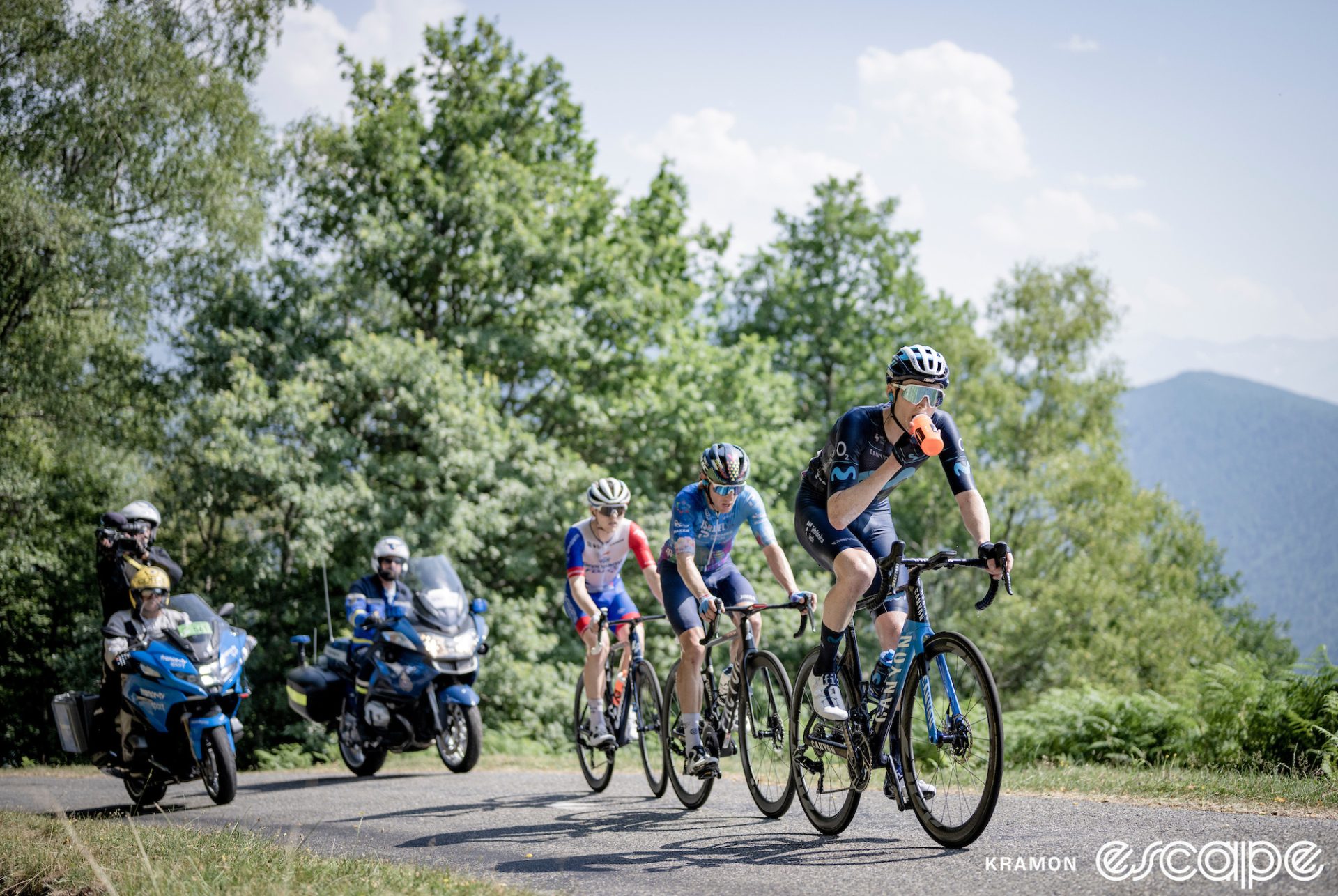
Race to the sun
Looking ahead, Jorgenson is almost certainly set to head to a new team next season. Though his destination is not yet known, he’s been linked to both Jumbo-Visma and Ineos, two of cycling’s biggest teams. It’s a surprising turn for a rider who never imagined he would make it this far. As a junior, Jorgenson didn’t know how high he might fly, but he kept doing the hard work and he kept moving forward step by step. Mostly, he kept hoping.
In hindsight, Jorgenson’s career feels like a tremendous act of optimism. He never stopped believing he could improve. Harnessed to his committed work ethic, that conviction has provided a powerful engine for his success. Over and over again, Jorgenson has made sacrifices in the present in the hope that it would pay off in the future. And it’s turned out that he was right. This year, he’s seen the stand-out results begin to come and big teams scramble to secure his services. Most importantly, he knows who he is and what he can do.
At Paris-Nice earlier this year, Jorgenson crossed the line fifth on the final stage around Nice, which is now his hometown. At the finish, he told Cheri how much he’d enjoyed being out there on the road that day. “He had so much fun doing it,” she says. “And I thought, how the heck many of us, without even winning, are having so much fun in our chosen career? Who can say that?” Jorgenson still loves the sense of adventure he found the first time he sat on a bike, and he thrives on the work he does each day in training. And now he can be more certain than ever that his day in the sun will come.
Jen See is a writer in Santa Barbara, California. She owns more surfboards than vegetables, her favorite food is espresso, and all her bikes are blue. This is her first story for Escape Collective.
Did we do a good job with this story?


